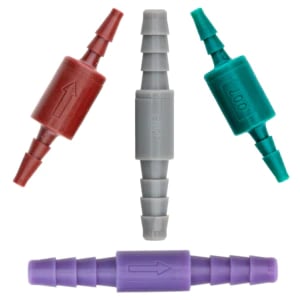 The contractor was not very happy. He had taken over a pneumatic control system that was in a very poor state. The air compressor station had not been
The contractor was not very happy. He had taken over a pneumatic control system that was in a very poor state. The air compressor station had not been
properly maintained allowing oil to spread throughout the system. By purging with Pneu-Flush most of the system was now clean and functioning properly, so far so good.
However one thermostat was defective and had to be replaced.
The existing thermostat was a onepipe, low volume type and the correct replacement was selected to replace it. As soon as air was supplied to the thermostat the valve slammed closed and then would not open again.
Obviously something was wrong, but what? The one pipe thermostat is a bleed
type controller; it regulates the branch pressure by bleeding air to atmosphere, a typical connection is shown in figure 1.

In order to function properly a flow restrictor is required in order that the volume of air being supplied to the branch line can be con rolled by the bleed action of the thermostat. The original flow restrictor was removed and not replaced when the old thermostat was replaced.
The unrestricted main line was able to supply more air than could be vented through the thermostat so the pressure could not be regulated.
When a new restrictor was installed the thermostat was able to regulate the branch pressure being supplied to the heating valve allowing the valve to open slowly and modulate smoothly.
The room was now under control and maintained at a stable, comfortable temperature.
If a modern two-pipe thermostat were installed we would not require a restrictor. The thermostat regulates the volume of air being supplied to the branch line. However, the existing piping would have to be reconfigured as shown in figure two.
